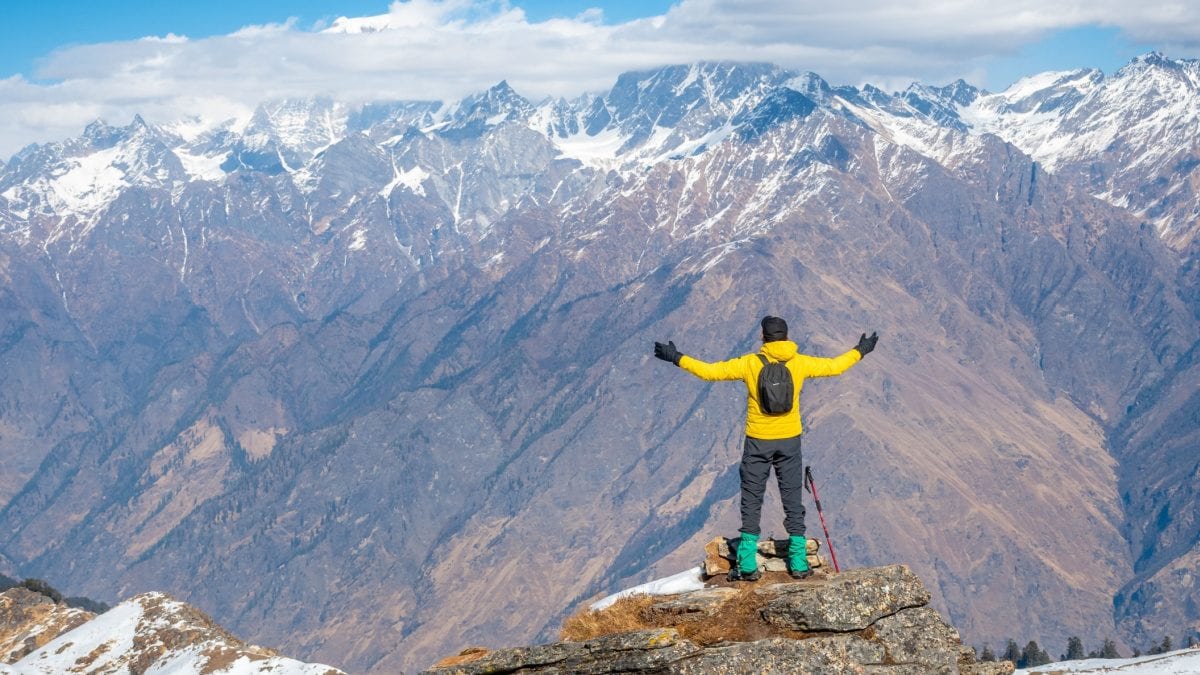Extreme tourism locations beckon thrill-seekers and adventure enthusiasts alike, promising an unforgettable journey beyond the realm of ordinary travel. From the towering peaks of Mount Everest to the uncharted depths of the Amazon rainforest, these destinations offer a tantalizing blend of adrenaline-pumping activities, breathtaking scenery, and transformative experiences that push the boundaries of human endurance and discovery.
As we delve into the captivating world of extreme tourism, we will uncover the unique challenges and rewards that await those who dare to venture into the unknown. We will explore the historical and cultural significance of this burgeoning industry, its impact on local communities and environments, and the latest trends and innovations that are shaping its future.
Extreme Destinations for Thrill-Seekers
For those seeking an adrenaline rush, the world offers a myriad of extreme tourism destinations that test the limits of human endurance and courage. These destinations provide unique challenges and experiences, promising an unforgettable journey for the adventurous souls.
Before embarking on any extreme tourism adventure, it is crucial to prioritize safety. Thorough research, preparation, and adherence to safety guidelines are paramount. Consulting with experienced guides, carrying appropriate gear, and maintaining physical fitness are essential for a successful and enjoyable experience.
Mount Everest, Nepal
- Scaling the world’s highest peak is the ultimate mountaineering challenge, offering breathtaking views and a profound sense of accomplishment.
- The ascent involves navigating treacherous terrain, extreme weather conditions, and the risk of altitude sickness.
- Safety measures include proper acclimatization, oxygen support, and expert guidance.
Victoria Falls, Zambia/Zimbabwe
- Known as the “Smoke that Thunders,” Victoria Falls is one of the largest waterfalls in the world, providing a spectacular sight and thrilling activities.
- Bungee jumping, white-water rafting, and helicopter tours offer adrenaline-pumping experiences.
- Safety precautions include wearing proper safety gear, following instructions, and being aware of potential hazards.
Antarctica
- Exploring the icy wilderness of Antarctica is an adventure like no other, offering encounters with penguins, whales, and breathtaking landscapes.
- Expedition cruises, ice climbing, and kayaking provide opportunities for exploration and adventure.
- Safety measures include appropriate clothing, proper training, and adhering to environmental regulations.
Amazon Rainforest, South America
- Venturing into the world’s largest rainforest offers a unique opportunity to witness incredible biodiversity and engage in thrilling activities.
- Guided treks, canopy tours, and wildlife encounters provide immersive experiences.
- Safety precautions include wearing protective clothing, using insect repellent, and being aware of potential wildlife hazards.
Great Barrier Reef, Australia
- The Great Barrier Reef is a natural wonder teeming with marine life, offering unforgettable diving and snorkeling experiences.
- Exploring the vibrant coral reefs, encountering marine creatures, and participating in underwater photography are just a few of the thrilling activities available.
- Safety measures include following dive instructions, using proper equipment, and being aware of potential marine hazards.
Extreme Activities and Experiences
Extreme tourism offers a diverse array of thrilling activities that cater to the adventurous spirits seeking adrenaline-pumping experiences. These activities not only challenge physical limits but also provide profound psychological and emotional benefits.
The skill levels and physical requirements vary depending on the activity. Some activities, such as skydiving, require extensive training and certification, while others, like hiking or mountain biking, may be accessible to individuals with varying fitness levels.
Psychological and Emotional Benefits
Engaging in extreme tourism can provide a range of psychological and emotional benefits, including:
- Increased confidence and self-esteem
- Improved stress management and resilience
- Enhanced problem-solving and decision-making skills
- Greater appreciation for the natural world
- A sense of accomplishment and personal growth
Historical and Cultural Significance of Extreme Tourism: Extreme Tourism Locations
Extreme tourism has a rich history, with roots in exploration and adventure. It began in the 19th century, when wealthy individuals sought out challenging and exotic experiences. Over time, extreme tourism has evolved to include a wide range of activities, from bungee jumping and skydiving to trekking and mountain climbing.Cultural
and societal factors have played a significant role in the popularity of extreme tourism. In the past, extreme tourism was seen as a way to test one’s limits and prove one’s courage. Today, it is often seen as a way to escape the mundane and experience something truly unique.
Extreme tourism can also provide a sense of community and belonging, as participants share their experiences and challenges with others.The impact of extreme tourism on local communities and environments can be both positive and negative. On the positive side, extreme tourism can bring in revenue and create jobs.
It can also help to promote cultural understanding and appreciation. On the negative side, extreme tourism can damage the environment and disrupt local communities. It is important to manage extreme tourism in a sustainable way to minimize these negative impacts.
Historical Evolution of Extreme Tourism
The history of extreme tourism can be traced back to the 19th century, when wealthy individuals began to explore the world in search of adventure. These early explorers often faced great challenges and risks, but they were also rewarded with unique and unforgettable experiences.In
the 20th century, extreme tourism became more accessible to a wider range of people. This was due in part to the development of new technologies, such as aircraft and climbing equipment. It was also due to a growing interest in adventure and exploration.Today,
extreme tourism is a global industry that attracts millions of participants each year. It offers a wide range of activities, from bungee jumping and skydiving to trekking and mountain climbing. Extreme tourism can be a life-changing experience, and it can help people to learn more about themselves and the world around them.
Cultural and Societal Factors Influencing Extreme Tourism, Extreme tourism locations
Cultural and societal factors have played a significant role in the popularity of extreme tourism. In the past, extreme tourism was seen as a way to test one’s limits and prove one’s courage. This was especially true for men, who were expected to be strong and brave.Today,
extreme tourism is often seen as a way to escape the mundane and experience something truly unique. It can also provide a sense of community and belonging, as participants share their experiences and challenges with others.Extreme tourism is also influenced by societal trends.
For example, the rise of social media has made it easier for people to share their extreme tourism experiences with others. This has helped to create a sense of community and belonging among extreme tourism participants.
Impact of Extreme Tourism on Local Communities and Environments
The impact of extreme tourism on local communities and environments can be both positive and negative. On the positive side, extreme tourism can bring in revenue and create jobs. It can also help to promote cultural understanding and appreciation.On the negative side, extreme tourism can damage the environment and disrupt local communities.
For example, trekking and mountain climbing can damage trails and vegetation. Bungee jumping and skydiving can disturb wildlife.It is important to manage extreme tourism in a sustainable way to minimize these negative impacts. This can be done by working with local communities to develop and implement responsible tourism practices.
It can also be done by educating extreme tourism participants about the potential impacts of their activities.
Future Trends and Innovations in Extreme Tourism
Extreme tourism is constantly evolving, with new trends and innovations emerging all the time. As the industry continues to grow, we can expect to see even more exciting and innovative ways to experience the world’s most extreme destinations.One of the most significant trends in extreme tourism is the increasing use of technology.
From drones to virtual reality, technology is being used to enhance the experience of extreme activities and make them more accessible to a wider range of people. For example, drones are now being used to capture stunning aerial footage of extreme sports, while virtual reality is being used to create immersive experiences that allow people to experience extreme activities without having to leave their homes.Another
trend in extreme tourism is the growing popularity of sustainable practices. As people become more aware of the environmental impact of tourism, they are looking for ways to travel in a more sustainable way. This is leading to the development of new eco-friendly extreme tourism activities, such as wildlife safaris and hiking trails.The
future of extreme tourism is bright. As technology continues to develop and sustainable practices become more widespread, we can expect to see even more exciting and innovative ways to experience the world’s most extreme destinations.
Emerging Technologies
- Drones: Drones are being used to capture stunning aerial footage of extreme sports, and to create immersive experiences that allow people to experience extreme activities without having to leave their homes.
- Virtual reality: Virtual reality is being used to create immersive experiences that allow people to experience extreme activities without having to leave their homes.
- Augmented reality: Augmented reality is being used to overlay digital information onto the real world, creating new ways to experience extreme activities.
Safety Advancements
- New safety equipment: New safety equipment is being developed to make extreme activities safer, such as helmets with built-in cameras and GPS tracking devices.
- Improved training: Improved training is being offered to help people prepare for extreme activities, such as wilderness survival courses and first-aid training.
- Increased regulation: Increased regulation is being introduced to help ensure that extreme activities are conducted safely, such as licensing requirements for guides and operators.
Conclusive Thoughts
Extreme tourism is more than just a fleeting thrill; it is a transformative journey that tests our limits, ignites our passions, and expands our horizons. Whether you seek to conquer towering mountains, navigate treacherous rapids, or immerse yourself in the untamed wilderness, the world of extreme tourism offers a myriad of opportunities to embrace the edge of adventure and create memories that will last a lifetime.
Popular Questions
What are the most popular extreme tourism destinations?
Popular extreme tourism destinations include Mount Everest (Nepal), the Amazon rainforest (South America), the Great Barrier Reef (Australia), Antarctica, and the Sahara Desert (North Africa).
What safety measures should be taken when engaging in extreme tourism?
Safety measures include proper training, using appropriate gear, checking weather conditions, informing others of your itinerary, and being aware of potential risks.
What are the psychological and emotional benefits of extreme tourism?
Extreme tourism can boost confidence, improve resilience, reduce stress, and foster a sense of accomplishment.



